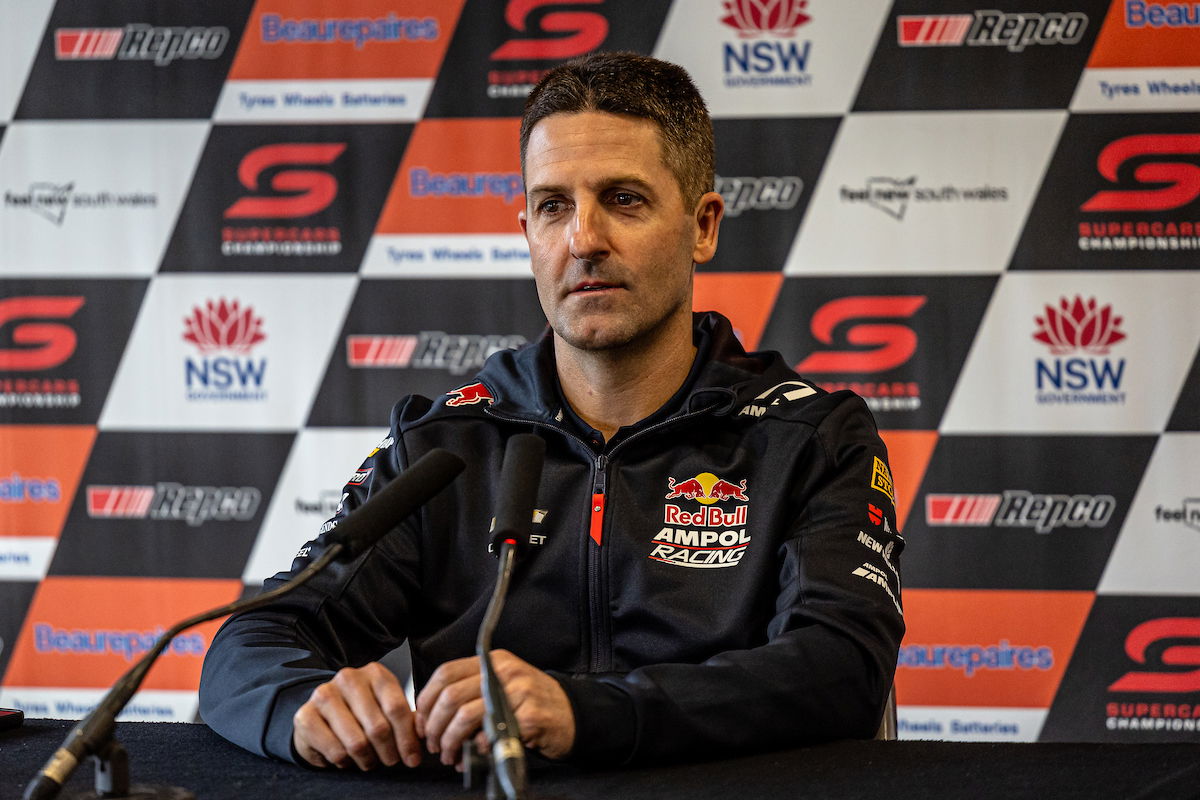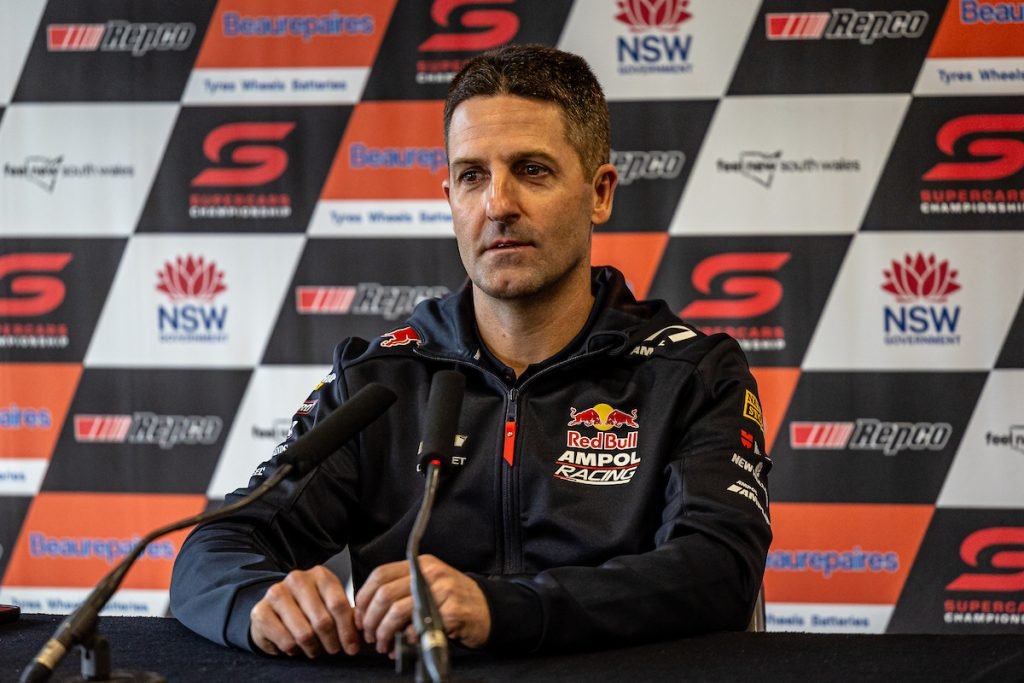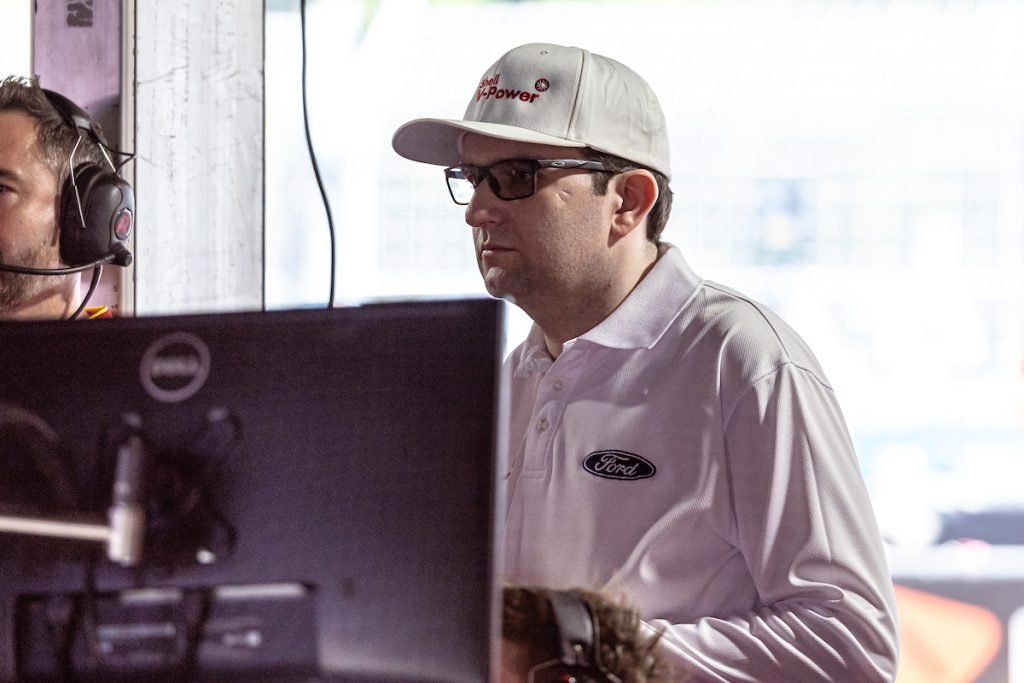

DJR took over Ford engine supply in the off-season and, under the leadership of Ryan Story, has worked extensively on a package of upgrades to the Coyote-based 5.4-litre unit which powers the Mustangs after it was found wanting in comparison to the KRE-built Chevrolet ‘LTR’ in 2023, the first season of the Gen3 ruleset.
While aerodynamics on both cars have been rehomologated following off-season wind tunnel testing, which is generally regarded as world’s-best practice, the long-awaited transient dynamometer running has still not occurred.
Engine performance thus remained a point of conjecture during pre-season, notwithstanding the rollout of torque sensors and a number of tests, both on airstrips and at race tracks.
It leaves Whincup, Team Principal at Chevrolet homologation team Triple Eight Race Engineering, not only nervous but also frustrated that the parity saga has dragged on into the second season of Gen3 – at great expense to his business and other’s.
“There’s nothing that’s gone on in the past that’s going to make us comfortable at all,” he said of the engine parity situation in light of the lack of transient testing.
“All this engine and aero work should have been done in 2022; that’s when we were homologating cars and engines and taking them to the party to homologate and get ready for 2023 season.
“So, if the [Ford] engine was done properly in the first place, we would be in a much, much better position from a homologation team point of view of the time, money, effort that we’ve spent.
“Talking about parity for 18 months now has been very, very painful.
“So, it’s great news that finally things are starting to get done, and hopefully there’s some improvement.
“But, as we sit right here now, we don’t know if this is going to continue for another 18 months or not.
“The good news, is DJR have got very, very good runs on the board, so they seem like a much more capable organisation to be able to get it right than the previous [engine] supplier.
“Now, I’m good friends with Robbie Herrod – we’re good family friends – but he’d never done race engines before; they’d only been road car engines.
“And the damage that’s gone on in the last 18 months is huge, you know, so let’s all pray that we’re going to get it sorted pretty quickly.
“I think we’re in a good place aero-wise; we just need to nail down Ford’s engine, decide we’ve got parity, and just get on with racing.
“The sporting parity difference between from team to team is huge; the technical parity is a fraction of that.
“So, we just need to lock it in, get rid of the trigger set-up – whatever that is – bin that, let’s just get the aero right, get the engine right, get on with racing, and go from there.
“So, the quicker we can do that, the better.”

Story, though, indicated that he is somewhat pessimistic about just whether or not the Ford engine will be competitive this weekend at Mount Panorama.
“We’ve left no stone unturned in the in the programme, trying to ensure that we have parity on the engine front,” he said.
“That will ultimately be settled in due course when we embark on an AVL transient dyno programme with both Chev and the Ford engines, hopefully in the first half of this year and potentially the first quarter of this year.
“So, there’s quite a bit still left to do, and we’ve had to go through the process of really understanding the idiosyncrasies of the platform and look for strengths, weaknesses, opportunities and threats.
“From there, we’ve embarked upon a programme that’s even involved us working with Supercars and MoTeC to change that ECU firmware.
“That kickstarted with Adrian [Burgess], when Adrian was doing the role of Head of Motorsport – and likewise with the aero programme – and then under Tim Edwards [Burgess’ successor, under the new title of General Manager of Motorsport] and continuing with Craig Hasted [Supercars’ engine expert], it’s been quite a journey, but it’s one we’re still on.
“So we’re really excited about hitting the track this weekend, but we’re under no illusions of what more we need to do.
“We’ve made huge inroads, and we’ll find out this weekend if we’ve done enough.
“That being said, we also have next steps in line for what we do in the event that we’re not quite where we want to be.”
Story was cagey, though, when asked by Speedcafe to outline those ‘next steps’, notwithstanding that Supercars is known to have tested with shift cut deltas in the Bathurst 12 Hour Gen3 ‘demonstrations’.
“Well, as Tim Edwards, I believe, has gone on record and talked about, there’s more sensors on the cars including the torque sensors, which had been used in the lead-up to the beginning of the 2024 season here,” he said.
“Let’s cross that bridge when we come to it.”
Story was empathetic, though, with his counterpart Whincup’s position given his is the homologation team for Ford.
“As Jamie highlights, the amount of work that’s been done by the homologation teams in this process probably goes unrecognised in a lot of ways,” ventured the DJR Team Principal.
“Coming into it with fresh eyes,” he added, having recently been sidelined from motorsport due to ill health, “it was quite clear, in the case of DJR, it compromised our season last year.
“But, these guys [Triple Eight] were doing the exact same thing.
“Windshear [wind tunnel] was a great example; Jeromy Moore, Pete Ringwood from Jamie’s organisation were fantastic.
“Everyone wanted the same thing and that was parity, and it was great, and we will just continue to work together to put this thing to bed.”




















Discussion about this post